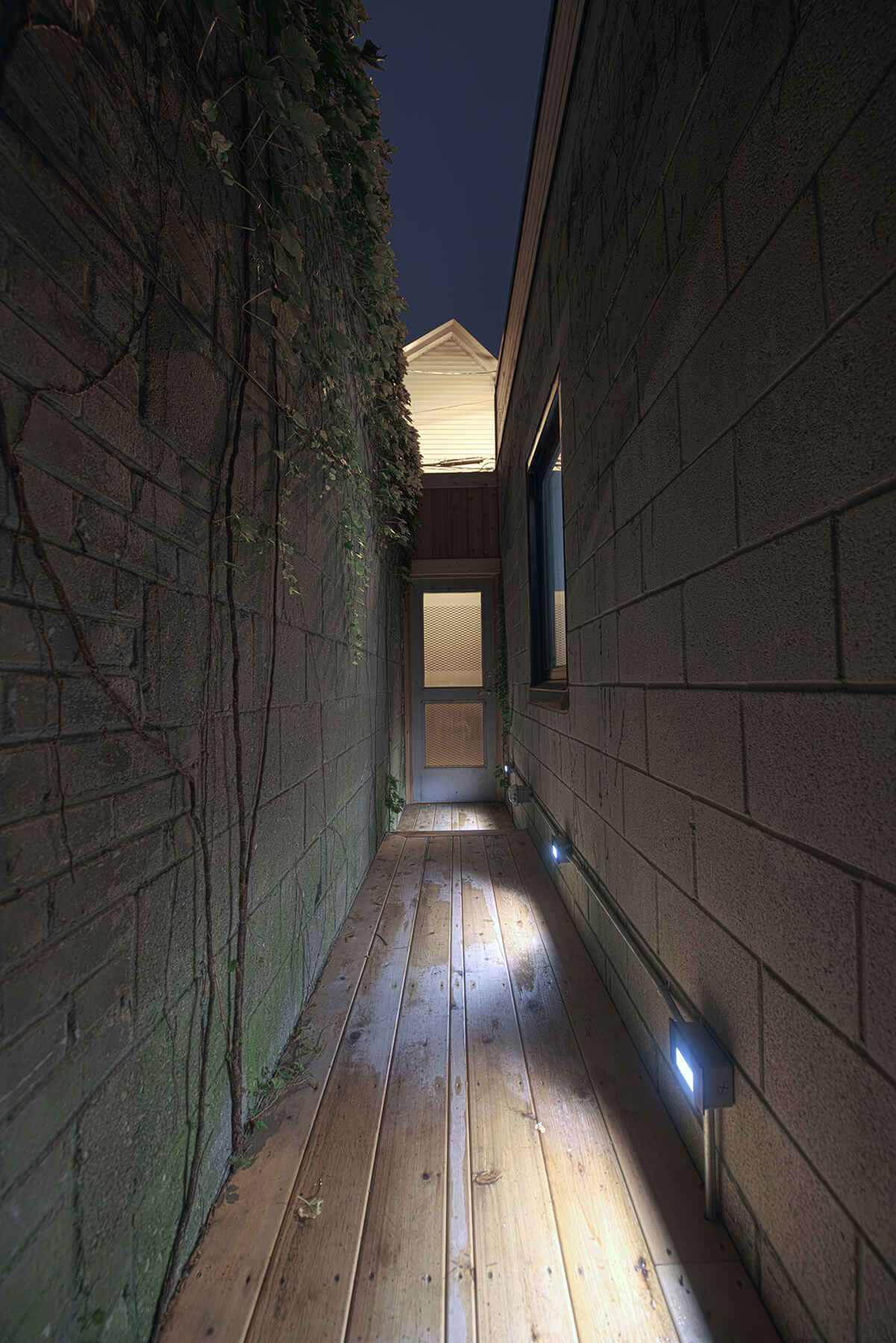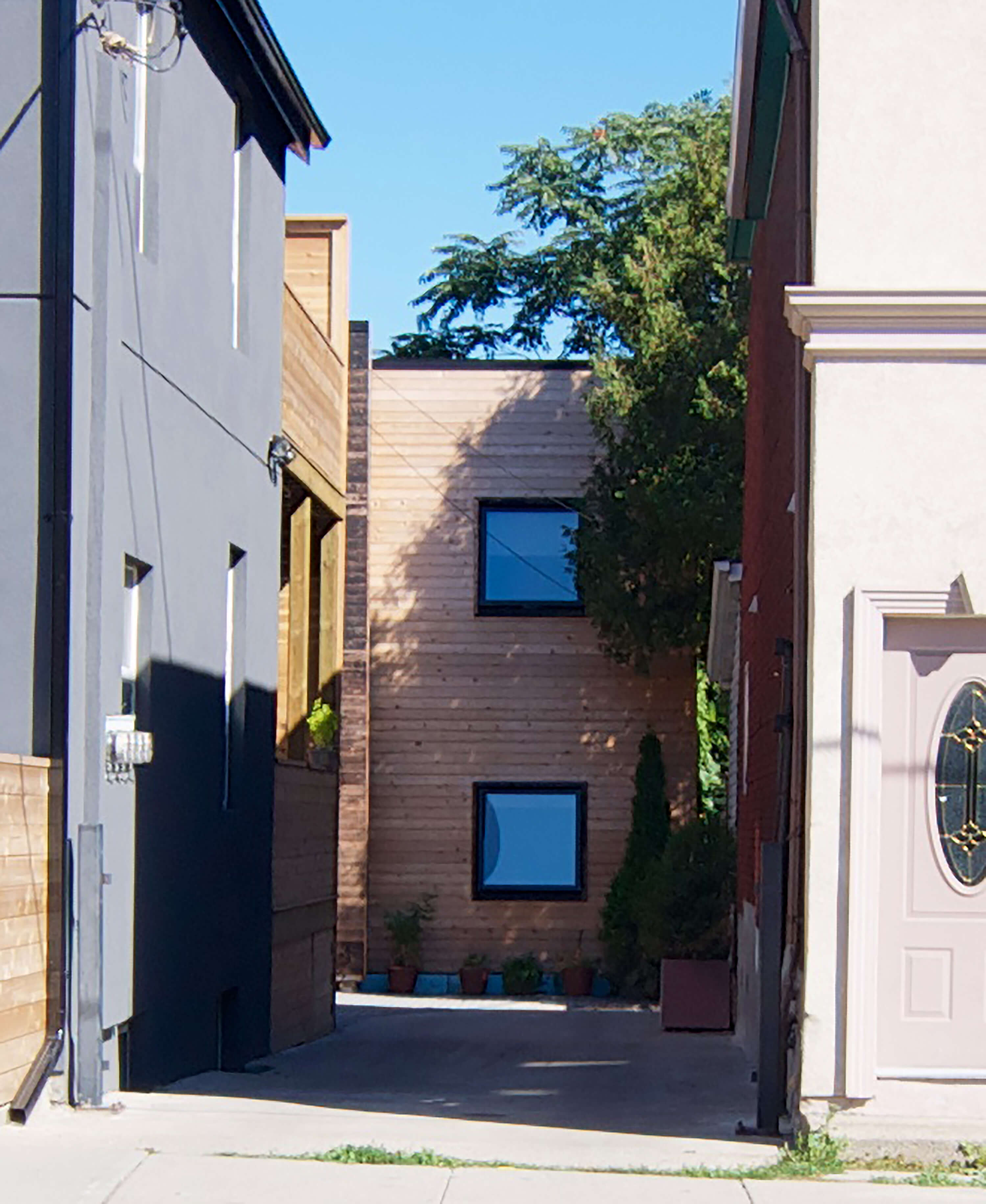LIVABL
JENNY MORRIS
2019 JUNE 21
THE BIG REASONS TO GO SMALL
The tiny house movement can give first-time homebuyers an access point to get into a competitive market. Craig Race is a Toronto-based architect and sustainable housing advocate. He founded Lanescape in 2014, which set out to crowdsource an as-of-right zoning policy that would allow Toronto homeowners to easily and affordably build laneway suites. “The cost of houses are crazy right now,” explains Race. “The easiest way to reduce the cost of a house is to reduce the amount of materials that go into it. Tiny homes can provide ownership opportunities for many first-time buyers.”
In an urbanizing, warming world, tiny homes can also provide accessible and environmentally friendly housing options in dense cities. “There’s no question that the more square feet of living space you have per person, the more energy gets consumed and the greater the carbon impact is of the building,” says Race.
Race used to live in Portland — which pioneered the tiny house movement when the city made it easier for homeowners to build ‘Accessory Dwelling Units’ — secondary structures that have provided affordable housing in one of the hottest housing markets in the US. “Really progressive municipalities are starting to create bylaws and standards for houses that are off-grid or transportable — or some combination of those two,” says Race.
HOW TO LIVE IN A TINY HOUSE IN A CANADIAN CITY
Tiny homes can be movable (where they’re on wheels) or stationary (on a foundation). Whichever option you pick will largely influence where you’re allowed to live.
“Sometimes they’re mobile — they don’t have a foundation or service connections,” says Race. “That is usually the most important differentiator for a municipality as to whether they’re accepted or not. Most municipalities are very traditional and their review process only allows them to look at houses that have a foundation, are connected to the grid for water and electrical and the usual stuff. As soon as that doesn’t exist, it throws a curve ball at them that they don’t know how to process.”
Basically, if it’s on wheels, you’re limited to where you can park it. “The reason is because there’s an issue with people who own recreational vehicles parking them in neighbourhoods and using them as dwellings,” says Race. Some RV parks allow tiny homes, but even then, you can run into issues. A couple in BC were turned away from a mobile home community because their rig didn’t meet park standards.
In Toronto, you can build a very small house, as long as it’s grid-connected and you apply for a building permit. For example, the city has gotten quite progressive when it comes to building secondary units on a primary property (a laneway house, for example). The city has a mandate to start looking at rear yard garden suites next summer. “The optimists in the city are hopeful that there will be a policy in place very soon to allow tiny homes in backyards all over Toronto,” says Race.
You’ll also want to keep an eye on the square footage of your tiny house, since it’s illegal to build a home smaller than a certain square footage in some municipalities. “Zoning and the building code are also becoming more progressive in that they’re allowing much smaller unit sizes,” says Race. This is primarily being pushed because of smaller and smaller condos rising in popularity. “As the code and zoning allows for really small units, that paves the way for really tiny homes to do the same thing.”
BUY THE LAND AND PUT A TINY HOUSE ON IT
I was looking at old log cabins in Ontario to buy, but lately, I’ve been singing a different tune: Buying land and building a tiny house on it.
In this case, it would still have to be on a foundation, but it’s much more relaxed. “It’s just a typical permit process,” explains Race. “The beauty of being somewhere like cottage country is that being off grid and using rudimentary service connections is very common. Most cottages are on septics, they use solar energy or they harvest their own rainwater. Things like that are actually already in place for cottages and can be applied to tiny homes very easily in those areas.”
CHANGE IS GONNA COME
Across Canada, the tiny house movement has faced some resistance — due to snail’s pace policy changes and a ‘not in my backyard’ mentality in some communities. “Like any kind of movement at all, people are just generally resistant to change — especially when it affects neighbourhoods where people live. People are very protective of their homes and any kind of change can often be difficult to stomach,” says Race, who experienced some of this during the laneway house initiatives.
“But ultimately, if the right people are engaging with communities and coming up with thoughtful and effective legislation to protect the existing neighbourhoods and allow tiny homes and other kinds of infusions to fit into a neighbourhood in a respectful way — people will usually get on board and understand that it has to happen.”
Read the full article here: https://www.livabl.com/2019/06/homebuyers-guide-living-tiny-house-canada.html

